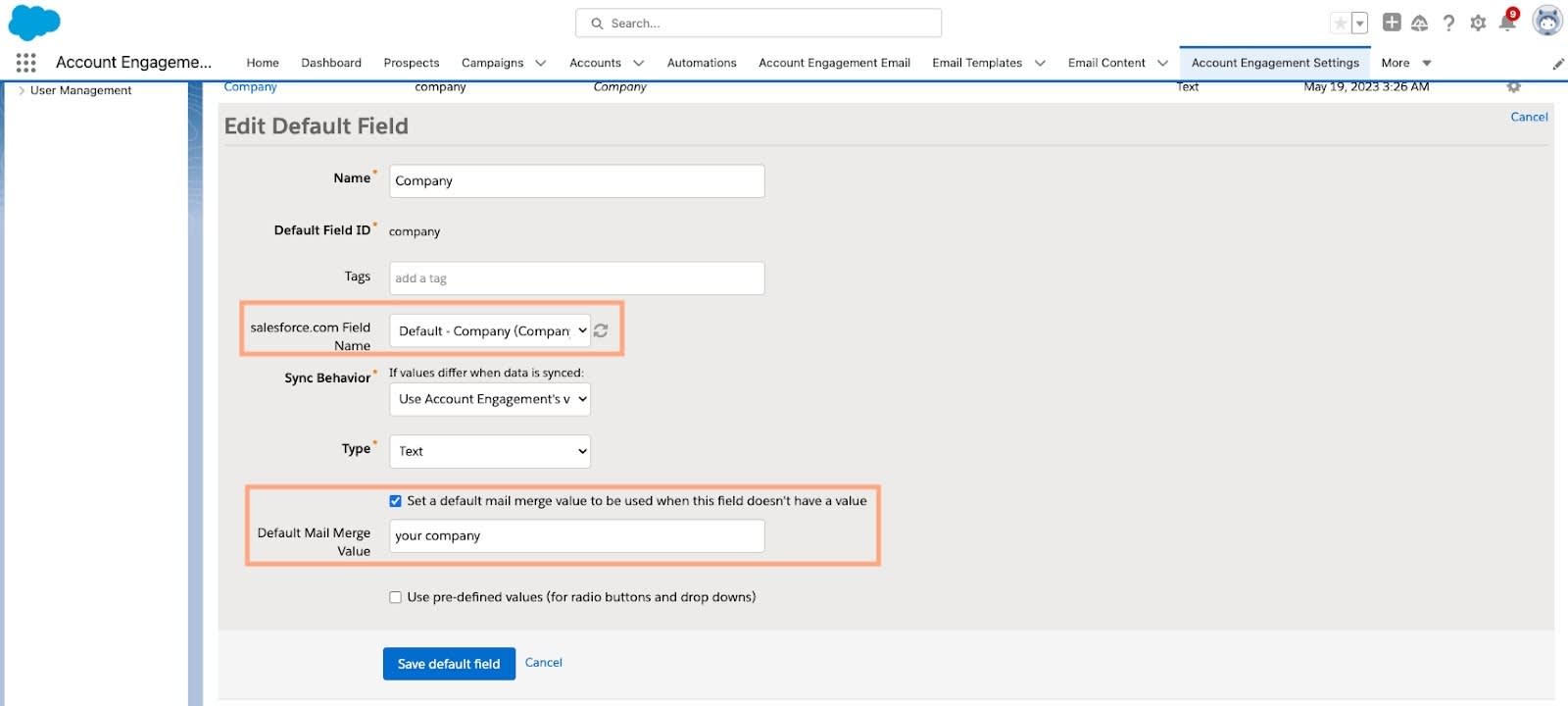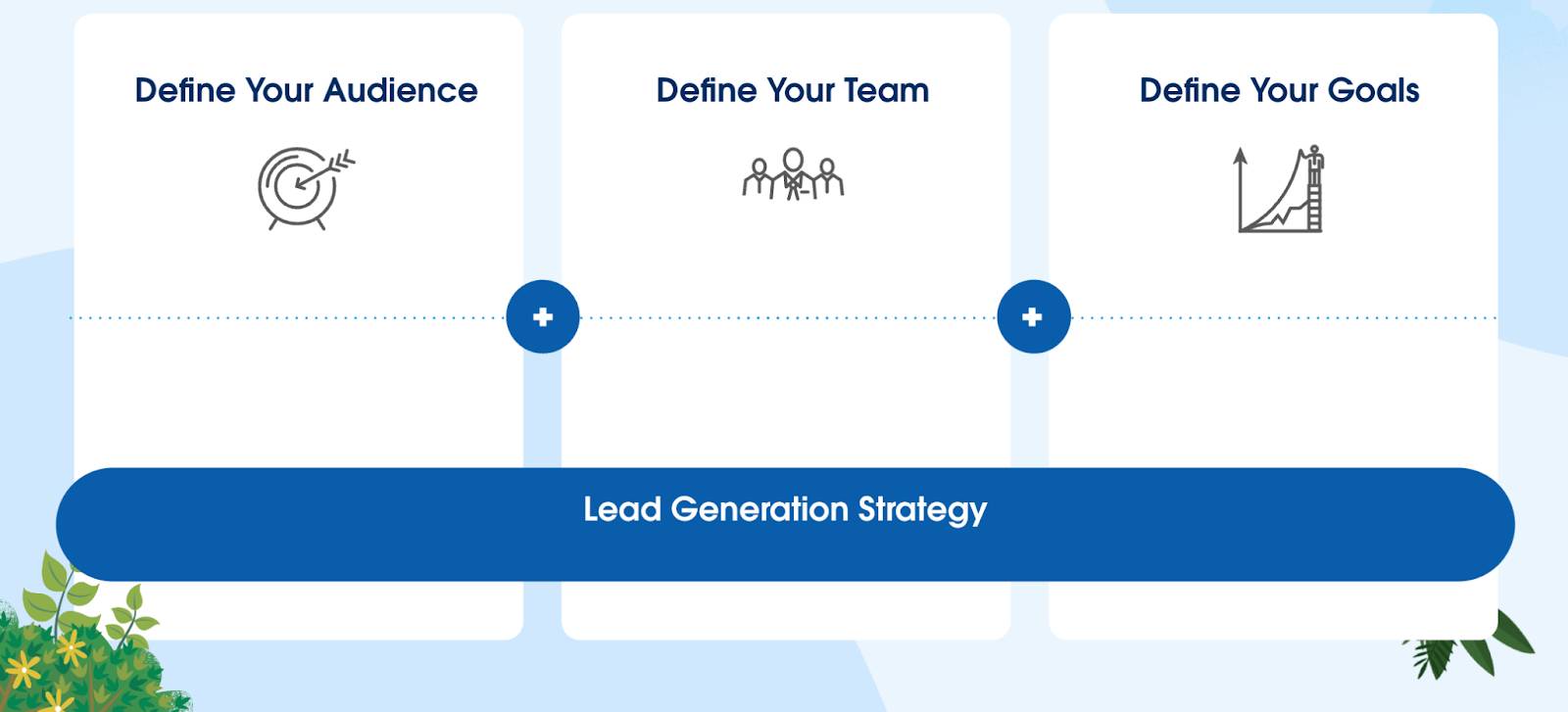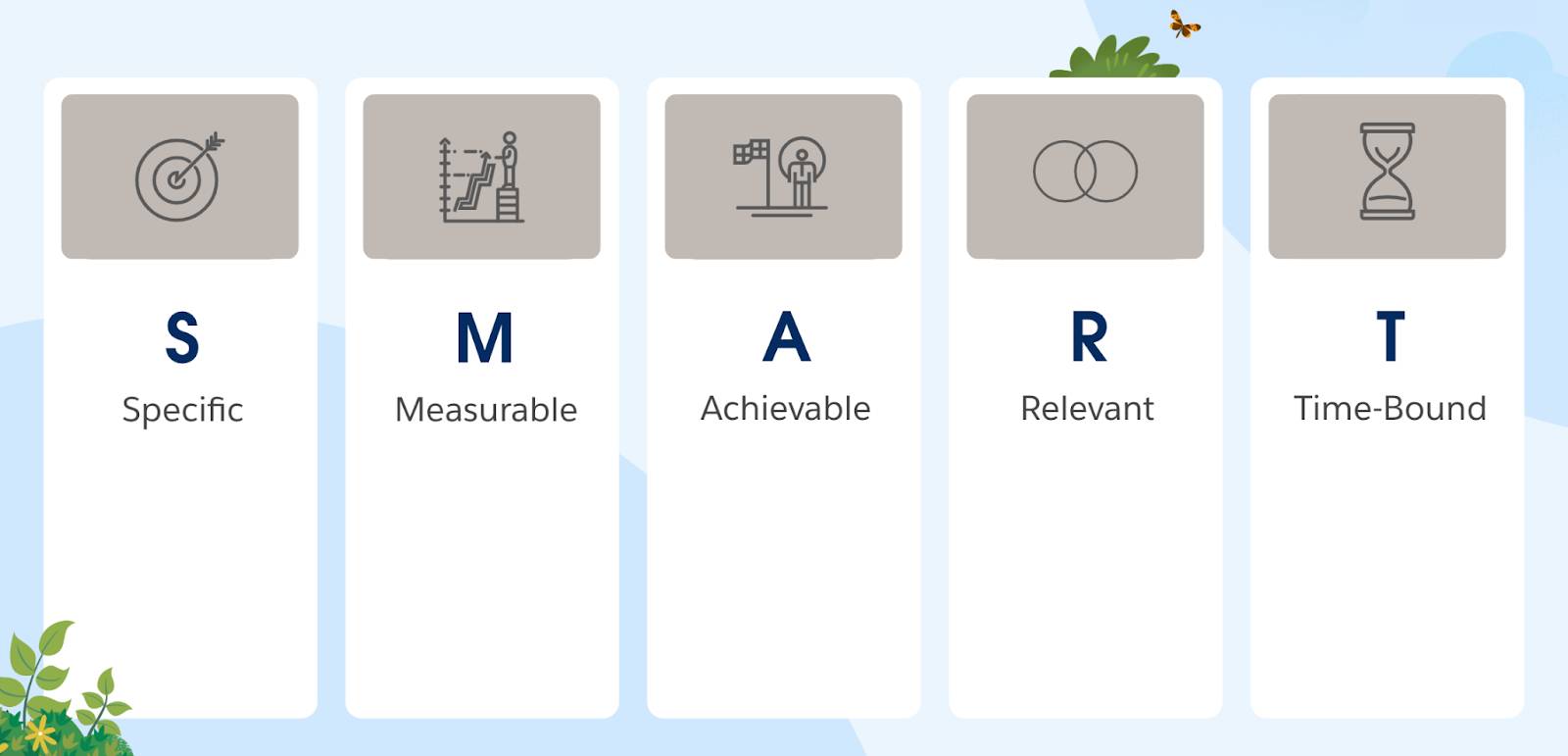Use Account Engagement to Support Your Marketing Strategy
Learning Objectives
After completing this unit, you’ll be able to:
- Organize your account to implement a lead nurturing strategy.
- Identify steps to create a lead nurturing strategy.
- Identify steps to create a lead generation strategy.
Plan and Prepare
When you’re ready to develop your lead nurturing strategy, your preparations should include a few housekeeping items that will simplify the process of building your engagement programs.
- Establish account-wide naming conventions.
- Update and review your Pardot data for accurate segmentation.
- Set default mail merge values for fields.
Get Organized
It’s important to set aside time to organize your Pardot account if you haven’t already. You’ll be reusing content and referencing existing lists and assets, so you need to make sure your content is clear and easy to find. Trust us, your future self will thank you.
Use naming conventions to keep your account organized and simplify the process of adding assets to your programs. With naming conventions, you establish a structure and provide consistency across your account. You can base your naming convention around an item like topic, asset type, date, channel, program name, and so on.
Although we recommend that you adopt a naming convention for all the assets you create in Pardot, lists are the most important assets to focus on. Lists are groups of prospects you send emails to or you nurture using engagement programs.
Here are some examples of naming conventions by asset type.
Asset Type |
Naming Convention |
Example |
|---|---|---|
Email Template |
Topic/Offering_Audience_Date |
WebinarInvite_Customers_23Mar18 |
Image File |
ImageName_Size |
Linkedin_Icon_30x30 |
List |
Type of Prospects_Purpose_Use_Date Content |
|
Landing Page |
Topic/Offering_Date |
SalesforceDreamin_FY23Q3 |
Once you’ve selected a naming convention, update all your existing assets in Pardot. Be sure to communicate this change to all admin and marketing users who create assets in Pardot, because they’ll need to use the convention moving forward, and will also need to easily find your new assets.
Personalize the Experience
Your sales emails can finally achieve that 1:1 marketing ideal, even at scale, when you add personalization. Not only does personalization appeal to your prospects and customers, but it can increase efficiency for your B2B company. Here are some tips.
- Use rich-text emails instead of HTML so emails look like they’ve been written by a sales rep.
- Include a personalized signature from a sales rep.
- Take advantage of variable tags to insert the right details.
- Send content based on prospects’ actions or interests.
Use the following checklist for personalization planning.
Your Personalized Checklist |
|
|---|---|
✅ |
Ensure your fields are mapped with fields in Salesforce, if desired. |
✅ |
Import in any data you want to fill in for segmentation or personalization. |
✅ |
Set default mail merge values for fields you intend to use in nurture emails. |
✅ |
Determine the basic personalization information you want to add, such as first name in the greeting or company name in the body of your message. Import data into these fields if they are empty. |
Setting up default mail merge values is a quick way to ensure that your emails still display relevant information even if there’s no value available for that field on the prospect record. More important, default mail merge values help you avoid embarrassing mishaps like sending an email addressed to [Your Name].
Here’s how to set up default mail merge values in your account.
- Navigate to Account Engagement Settings | Object and Field Configuration | Prospect Fields.
- You’ll be presented with a custom fields table and below that, a default fields table.
- Find the field you want to work with in the table and click
 .
.
- Click Edit. (In the example below, we create a “your company” default for records that don’t have a company name.)
- Select Set a default mail merge value to be used when this field doesn’t have a value.
- In Default Mail Merge Value, enter your default value.
- Click Save default field.

Considerations for Lead Generation Strategy
When thinking through a lead generation strategy there are three areas of focus: your audience, your team, and your goals. It works to increase brand awareness, and goodwill with your customers.

Considerations for Lead Nurturing Strategy
A successful lead nurturing strategy involves marketing and sales working together to identify the needs of your audience. It works to build trust and meaningful connections with your customers. You need to identify your business priorities and keep up with the latest news and trends.
You’re ready! Let’s start building your lead nurturing strategy. Here’s a few ideas to get started.
Create Your Content
Content is the fuel of your lead nurturing engine. Many companies find they are not quite prepared to fuel their program with content yet.
- Consider creating several different assets or content such as white papers, blog posts, or webinars before launching your new lead nurturing program.
- Audit existing content that supports your business case like white papers and events. If you’re writing nurturing emails, follow the one-to-one idea all the way through.
- Use HTML, plain text, and Rich Text for your emails.
Target Your Communications
This is the foundation of your lead nurturing strategy. You must communicate one-to-one with prospects and customers through one-to-one nurturing programs.
- Use segmentation to sort your leads into lists from relevant criteria and then develop content catered to them.
- Create new email templates using merge fields and dynamic content specifically for your new lead nurturing program.
- Consider the timing of email sends. We recommend a cadence between every 6 to 45 days as this prevents email recipients from getting more than one email from your company in a week, or from going more than a month and a half without hearing from you.
- Using triggers in an engagement program to ensure that emails are delivered at exactly the right time to keep your company relevant to your prospects and customers.
Planning before starting your program will keep you from creating content too fast with no overall plan as to how to use it.
Move Them Along
The goal of your nurturing program should be very specific. It should move someone to the next step in your marketing funnel.
- If your goal is too large, your emails will not be specific enough.
- Emails that are not specific enough, are not relevant, and won’t get engagement.
- Create several smaller nurturing programs linked together to move someone from stage to stage, all the way to MQL.
While all of this information is a great place to start, please remember that new, different, and sometimes better practices are evolving every day. Find what works best for you and your company but stay up to date with current trends within your industry.
Now that you have learned why a good lead generation and lead nurturing strategy is important, let’s look at what a marketing strategy is and how essential to your business it is.
So what is a marketing strategy? It is a document that details the planning and implementation of all your marketing (lead generation) and lead nurturing initiatives. It is focused on how you will reach prospective customers and how you will engage and nurture them throughout the sales cycle.
A great marketing strategy should start with a solid understanding of your brand and its value to your audience. It should set priorities and goals both short and long-term, that tie back to your company goals and values with a clearly defined path. While this plan may only be implemented by your marketing and sales teams, it should incorporate all aspects of your company and align with and support all teams within your organization.
Business is all about relationships. Those relationships, like any personal one, need attention in order to grow and stay strong. Lead generation is the first touchpoint of any potential new relationship. Lead nurturing is the process of developing and maintaining those relationships with customers at every stage of their journey, usually through marketing and communications messaging.
Automated lead nurturing uses software to send unique messages that are triggered by customer behavior or predetermined schedules. Since listening to potential customers and answering their questions is a critical part of lead nurturing, automation tools also alert marketers to customer questions and comments in need of responses.
Use Account Engagement to Combine the Power of Lead Generation and Lead Nurturing
So how do we bring those two things together and use Account Engagement to do it? Let’s talk about how we can combine the power of lead generation and lead nurturing using Account Engagement features. Let’s go!
Step 1: Set goals.
While any plan needs a clearly defined path, this one needs extra attention because so many different parts of the business need to be following it. Your goals need to be meaningful and measurable while staying aligned with larger business objectives. This is where the SMART (Specific Measurable Achievable Relevant and Time-Bound) method comes into play. Check out ideas on how you can be sure your goals are SMART.

Regardless of how you do it, make sure you set strategic priorities. Not all goals have the same value to the company so it’s kind of like prioritizing the most important. To ensure you are on track with your goals, check in often.
Step 2: Identify audience and create personas.
Once you’ve established your overall goals and tactics for the year, it’s time to shift your focus to your audience. Things you should focus on:
- Who are they?
- What are they looking for?
- What are their pain points?
- What problem can you help solve for them?
This step is all about identifying your audience, and then how to reach them where they are at the right time. Your strategy should incorporate your sales team’s perspective as they know all about the audience because they interact with them daily. They will know your audiences’ wants, needs, and behaviors.
Segmentation is key to creating targeted interactions that are meaningful and timely.
Develop and make use of user personas to help you understand your audience better. These profiles combine demographic and psychographic information about different segments of your audience to create more specific target segments.
User personas can also help tailor your content strategies to connect with specific audiences in ways that are meaningful to them. Your messaging, the channels you use, how often you communicate, and even when–these can all be informed by a digital marketing plan that uses strong segmentation and the right reporting tools. You’ll learn more about your audiences over time. And as you do you’ll be able to make your efforts even more relevant.
Step 3: Measure your success and iterate upon it.
To evaluate your plan and its efficacy, make sure you’re looking at the right metrics. Analyze your data and look for trends. Do you understand the KPIs? While conversions are the ultimate goal, understanding your audience’s full ecosystem of actions and behaviors will allow you to reach success. The more granular you can get with your reporting, the more insight you’ll have. With the right data visualization tools, you will easily be able to see if you’re reaching your objectives.
Now that we have learned what a marketing strategy is and several things to consider when building one, you’re ready to develop your marketing strategy. How are you going to combine lead generation and lead nurturing into this overarching strategy? Throughout this module, you’ve learned that setting clear goals using the SMART method is the first step. Step two is identifying your audience and creating personas and lastly, step 3 is to measure your success and then iterate upon it. In the next unit, we will look at that lead generation piece and how to integrate it into your marketing strategy.
Resources
- Salesforce Blog: Lead Nurturing in Salesforce
- BetterUp Blog: 10 SMART Goal Examples for Your Whole Life